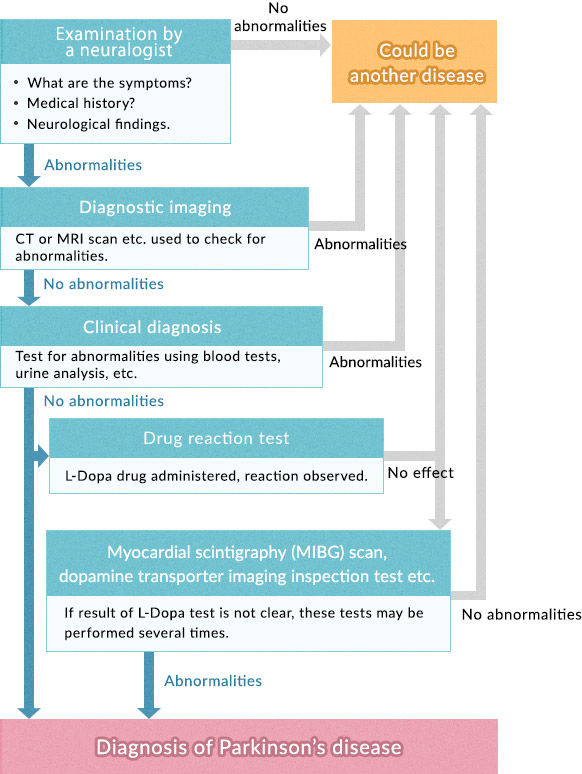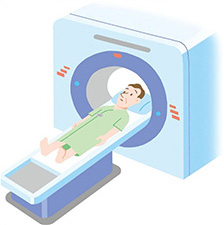What are the diagnostic criteria for Parkinson's disease?
The diagnosis of Parkinson's disease starts with a neurologist interviewing the patient about their medical history. If, based on this, Parkinson's disease is suspected, tests are conducted to investigate brain and muscular abnormalities. Diagnostic Imaging, blood tests, and urine analysis are performed to make sure it is not another disease, and the results are checked against diagnostic criteria. If the criteria are met, a diagnosis of Parkinson's disease is made.

Medical History review
Patients are asked first what kind of symptoms they have.Below are the main questions a doctor will ask. It is recommended to prepare notes in advance so that correct answers to questions can be provided, as they are all important for making a diagnosis.
- What kinds of symptoms do you have?
- When did the symptoms start and how long have they lasted?
- Have the symptoms changed?
- What diseases have you had before, and do you have any diseases now?
- Are you taking any medications now (including over the counter drugs a. health foods)? If you have a record book of medications taken (known in Japan as an Okusuri-Techo), take it with you to the exam.
- What diseases have your family members had? In particular, has anyone in your family ever shown the same symptoms?
- Have you ever had an allergic reaction to medication? If so, what was the name of that medication?
Testing for Parkinson's disease
The exam for Parkinson's disease is based on the review of your medical history, but diagnostic imaging may be used to rule out other diseases that are easily mistaken for Parkinson's disease.

CT and MRI scans can be used to rule out the possibility of other brain diseases besides Parkinson's disease (e.g., cerebrovascular disorders and brain tumors).
Your doctor might also perform a test called an MIBG myocardial scintigraphy, which is used to examine the condition of sympathetic nerves in the heart. For this, you take a test agent containing a substance called metaiodobenzylguanidine, which is similar to norepinephrine (also called noradrenaline). The degree to which this agent collects in the heart is then assessed using images. It is known that this agent does not collect in the heart in Parkinson's disease patients, and this fact is used as a reference in making a diagnosis.
In January 2014, a testing procedure called dopamine transporter (DAT) became available in Japan. DAT is a protein that encourages the recycling of the dopamine that is used to send signals in the brain. This test discriminates between conditions such as Parkinson's disease and dementia with Lewy bodies by visualizing the workings of DAT.






